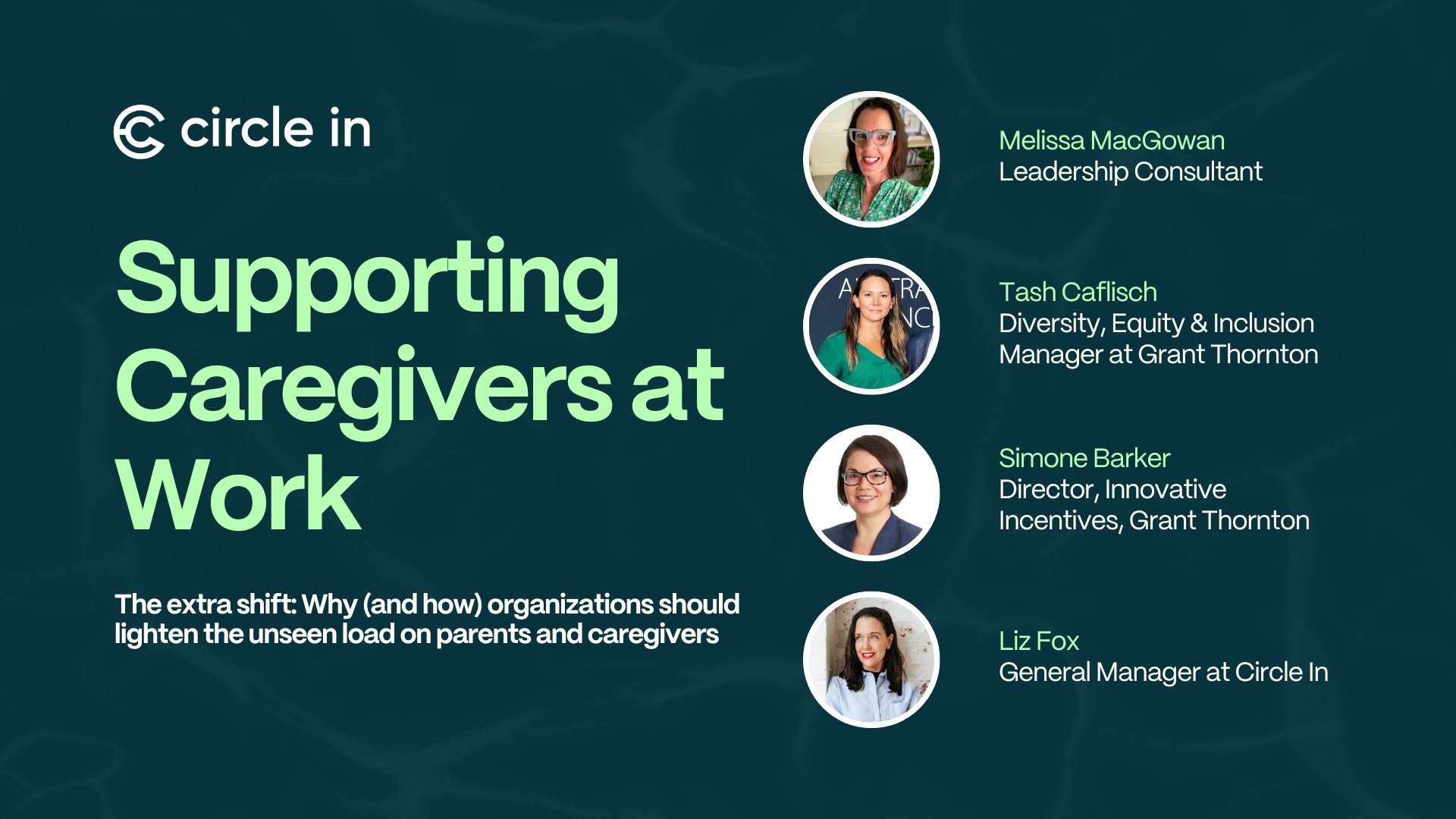Balancing work and home life is tough for a lot of parents and caregivers and the constant juggle and competing demands can take a huge toll – mentally and physically. HR plays a key role in supporting their working caregivers to manage the load, but why is it so important and what does this support really look like? We spoke to two HR experts and a working parent to find out.
“Essentially we have two full time jobs vying for your attention.”
– Simone Barker, Director, Innovative Incentives at Grant Thornton
Flexi by name and nature
One of the best ways workplaces can support parents and caregivers is by offering flexibility. This doesn’t just mean flexible work hours but adopting policies that recognize and accommodate the diverse needs of different family structures. Grant Thornton introduced a “Flex Appeal” policy back in 2015 which includes options for part-time work, compressed hours, reduced hours, and flexible work locations, allowing employees to balance home and office setups. For Grant Thornton, it’s also about considering flexibility in all their people policies. This includes having them on a two-year cycle to ensure they are staying ahead of the curve.
“Our families don’t all operate in the same way so when we have narrow policies, that’s not going to fly.”
– Tash Caflisch, Diversity, Equity and Inclusion Manager at Grant Thornton
The power of autonomy
Autonomy for working parents is crucial because it acknowledges their diverse responsibilities outside of work and empowers them to manage their professional and personal lives. When organizations genuinely embed flexibility, it demonstrates a commitment beyond rhetoric, translating into policies and practices that accommodate the complexities of caregiving. This entails systematically identifying and dismantling the barriers that hinder caregivers from utilizing available flexibility options, such as rigid scheduling, full-time office mandates or lack of remote work opportunities. Seeking continuous feedback and input from caregivers ensures that policies remain responsive to their evolving needs and challenges. As Simone Barker from Grant Thornton says, “caregivers also need to contribute to the thinking around these policies and how they use them by being bold and being loud, and communicating about how we use them.” It’s about normalizing later starts, school pick ups or having to duck out for an appointment, so that it becomes part of everyday workplace culture.
“When we lose autonomy and choice, it creates a genuine threat response in our brain, and that reduces capacity for almost everything.”
– Melissa MacGowan, Leadership Consultant
It all comes from the top
Leadership’s role in modeling the utilization of policies for working caregivers also helps foster a culture of support and understanding within an organization. When leaders visibly engage with and benefit from flexible work arrangements, parental leave policies, and other caregiver-friendly initiatives, they not only demonstrate the organization’s commitment but also break down stigma surrounding caregiving responsibilities. By openly discussing their own experiences and challenges in balancing work and family life, leaders can also help normalize the use of these policies, encouraging other employees to do the same without fear of judgment or career repercussions. This modeling behavior creates a ripple effect, inspiring trust and confidence among team members that these policies are not only available but actively endorsed and valued by leadership.
“Once you get the cultural shift of moving through these kinds of changes, it starts to filter down and people start accessing those policies.”
– Tash Caflisch, Diversity, Equity and Inclusion Manager at Grant Thornton
The key role of people leaders
Managers play a central role in supporting caregivers to thrive in all stages of their caregiving journey by fostering an environment of understanding, flexibility, and empathy, and by accommodating flexible work arrangements that cater to the unique needs of caregivers in their teams. Effective managers will actively listen to caregivers’ concerns and proactively seek solutions to alleviate pressures but also promote open communication and regular check-ins. But to lead well, organizations need to invest in their people leaders too and provide them with the tools and resources they need to create that psychologically safe workplace.
“It’s about taking time to build an understanding of their responsibilities outside of the workplace and having a mutual understanding that fosters a supportive and empathetic work environment.”
– Melissa MacGowan, Leadership Consultant
The commercial edge
Supporting caregivers in the workplace isn’t just a cultural opportunity—it’s a commercial one too. It’s not just a matter of compliance; it’s a strategic alignment and resource management issue. Often, organizations adopt a fragmented approach where various departments like HR, OD, and safety are working in silos—each handling different aspects be it training, incentives, mental health, and inclusive hiring. Melissa believes that a unified, coordinated effort to create a shared vision of what it means for employees to thrive is key. By aligning these efforts, organizations gain the ultimate competitive edge – the mental health and wellbeing of their employees. And where there’s a workforce that is healthy and thriving, there’s greater commercial success.


